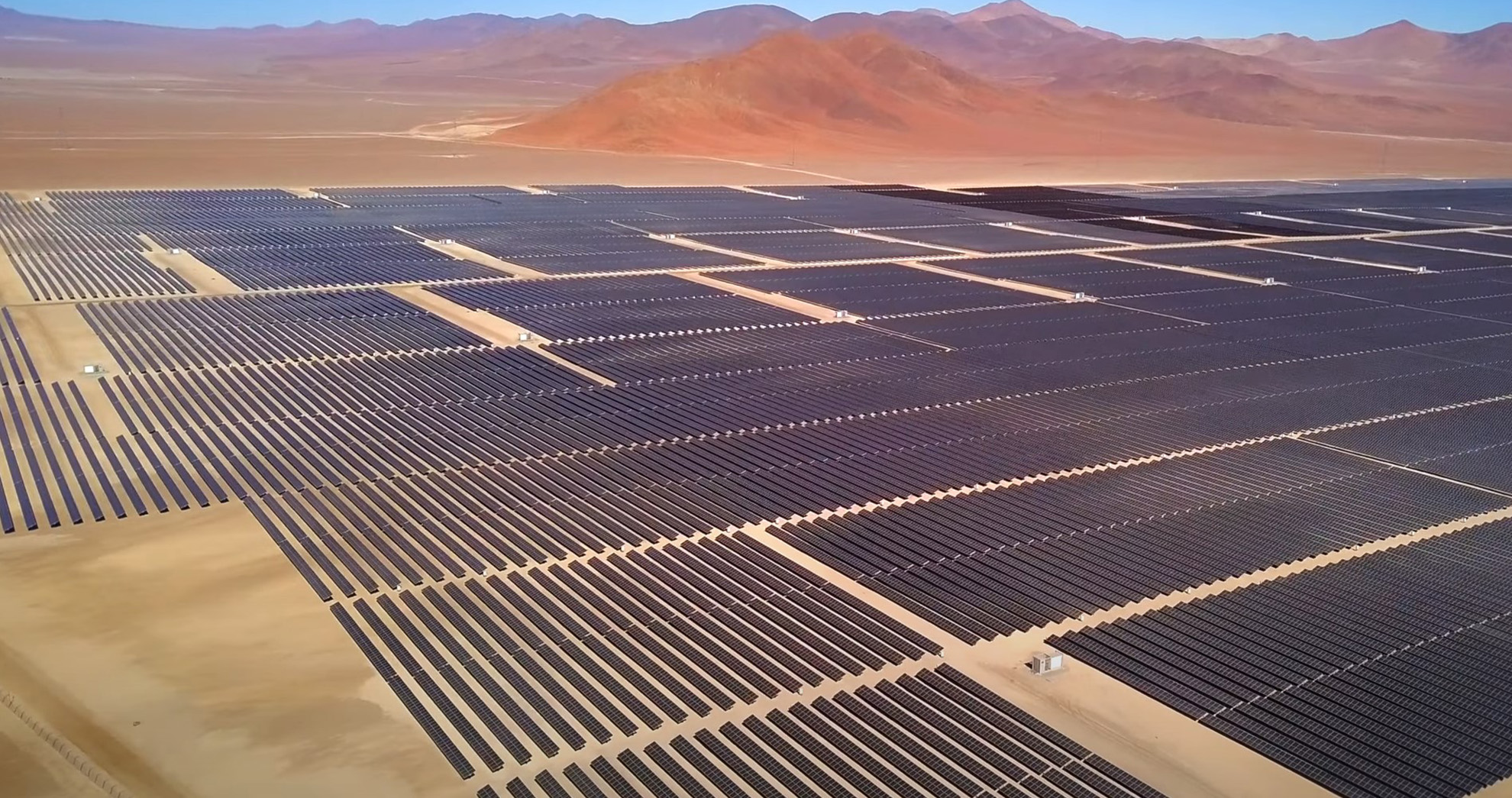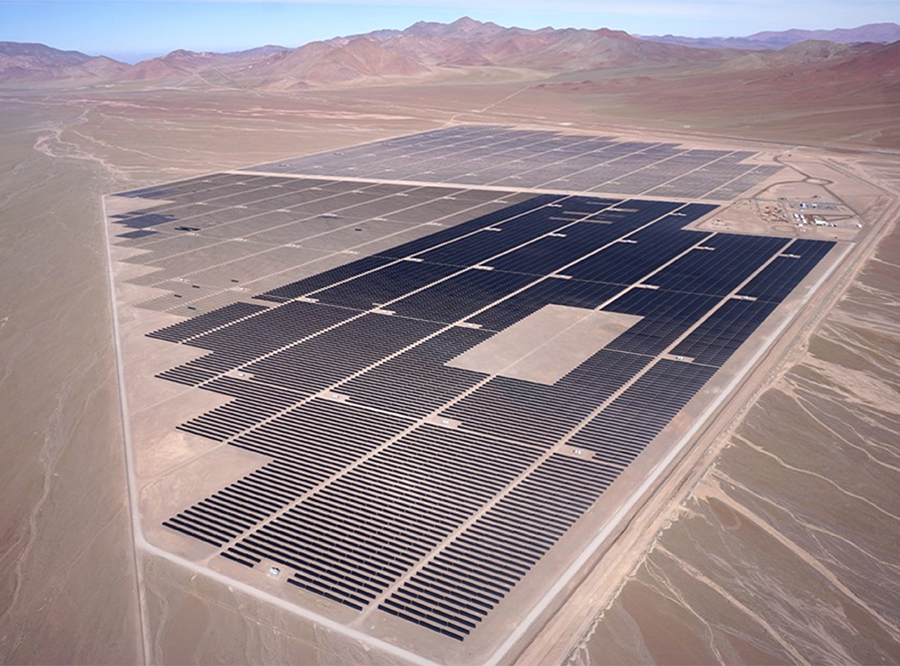Chile’s Green Revolution

Chile, the narrow “tie“ that runs along the Pacific coastline of South America, is experiencing a remarkable transformation. The country is at the forefront of Latin America’s renewable energy transition, and is undergoing an impressive transformation from fossil fuel economy to green energy pioneer. Chile is taking advantage of its unique geographic diversity to chart a sustainable future and make a name for itself as a global pioneer in the use of renewable energies.
When the Spanish conquerors were crossing the inhospitable expanses of the Atacama Desert in the 16th century, all they saw was an endless hostile wasteland. Cristóbal de Molina, one of the first Europeans to describe this region, called it “a sandscape…, where there is very little water and no grass or green things.” The Spanish used to refer to the Atacama as the ‘Gran Despoblado’ – a large uninhabited and barren land.
Almost 500 years later and that image has changed dramatically. In the Atacama Desert, which was once regarded as worthless and hostile to life, the world’s largest lithium reserves are now being mined. It is also home to some of the most advanced PV power plants, such as Chile’s one of the largest commercially operated PV farm Diego de Almagro Sur and Latin America’s first solar thermal power plant Cerro Dominador. Not only are these projects technological masterpieces, but they are also testament to Chile’s commitment to chart a sustainable and green future.
Chile’s rise in the renewables era
Chile is at the vanguard of the green wave in Latin America and in recent decades has transformed its energy infrastructure in an impressive fashion. The country has gone from being an economy heavily dependent on fossil fuels to a pioneer of renewable energies. This is all thanks to Chile’s geographic diversity, which – from the Atacama Desert in the north to the windy plains of Patagonia in the south – harbors considerable potential for solar, wind and hydropower.
These unique geographic and climatic conditions have led the Chilean government to pursue a sustainable energy policy that dispenses with the usual support mechanisms and subsidies. Daniel Rosende is the General Manager of SMA South America headquartered in Chile, a subsidiary of the world-leading German specialist for photovoltaic system technology. He established the SMA subsidiary in 2012: “Shortly after it was founded, we discussed the Chilean energy market at a meeting with a global PV project developer. I explained that there was presently only 3 MW of solar power installed there, and my conversation partner thought I’d said that the country’s PV capacity was 3 GW. It was utterly incomprehensible to him that he was wrong by a factor of 1,000 and the figure really was only 3 MW – just enough to supply 7,500 households!” Some ten years later and SMA alone has already installed about 3 GW of power in Latin America.

Daniel Rosende believes there are multiple reasons for the rampant growth of installed capacity for renewable energies in Chile, which have propelled it to a leading position among Latin American countries in terms of the share of renewable energies in the energy mix: “Because the country hardly has any conventional resources for generating energy, energy prices used to be exceptionally high. At the same time, we possess some of the best solar and wind resources in the world. Renewables have developed so well in Chile because they were competitive.”
Caught between climate change and energy independence
Chile’s impressive evolution on the renewable energies front has certainly not been without its challenges. The country is having to contend with a number of climatic and geographic challenges, which are complicating the transition to a more sustainable energy supply. Although the Atacama Desert, one of the driest regions in the world, offers the perfect conditions for solar power, it also places high demands on the technology and infrastructure.
Climate change has also led to a rise in extreme weather events, which are taking their toll on the country’s energy grid and are highlighting the need for a robust and flexible energy infrastructure. By the same token, Chile’s geographic diversity also presents some substantial opportunities. The long coastlines and the powerful winds in the south of the country are ideal for the expansion of wind power, while the large number of rivers and lakes offer potential for hydropower.
The Chilean government has come to understand what these challenges and opportunities mean and is working hard to put in place the necessary framework conditions for a sustainable energy future. This also includes championing research and development in the renewable energies sector and creating incentives for private investment.
Its efforts are already bearing fruit: “Renewable energies currently occupy a share of over 60% of Chile’s supply. On some days, we’re even able to generate 70% to 80% of our energy from renewable energies,” Rosende reports.
From the Andes to Europe: Chile’s role in the global energy market
Chile’s impressive progress in renewable energies has also earned it international acclaim, and the country is playing an increasingly prominent role in the global energy market. Europe, which is focusing intently on expanding renewable energies and reducing its greenhouse gas emissions, has a particular interest in the developments in Chile. Over the last few years, the European Union and Chile have stepped up their cooperation in renewable energies with the aim of sharing experience, conducting joint research projects and promoting investment in sustainable energy projects.
Chilean energy production has the potential not just to cover national energy requirements, but to export energy to other countries as well. The geographic proximity to major energy markets in South America and the prospect of transporting energy to North America or even Asia via underwater cables is opening up new sales markets for the country. Even Europe stands to benefit from Chilean energy production in the future, particularly when it comes to importing green hydrogen.
Green hydrogen, which is produced with the help of renewable energies, is currently regarded as a key technology for the energy transition and achieving our climate targets. “Solar PV and wind power generation costs are very low in Chile, making it one of the most competitive countries in the world,” Rosende explains. “This means we have the best conditions in place to generate competitive green hydrogen from solar and wind power as well. We’re expecting a major boom in the installation of new capacity for renewables solely for the generation of green hydrogen to cover global energy requirements.” This could make Chile one of the world’s leading producers of green hydrogen. The European Union has already expressed an interest in collaborating with the country, and the first joint projects and partnerships are in the planning stages.
Diego del Almagro Sur: a milestone for renewable energies in Chile
One of the flagship projects that SMA worked on in Chile is Diego del Almagro Sur. This solar project, located in the breathtaking landscape of the Atacama Desert, represents a major step toward a more sustainable future for Chile and demonstrates the region’s determination to play a pioneering role in the global energy market.

From a technical perspective, Diego del Almagro Sur is a masterpiece. A capacity of 220 MW makes it one of Chile’s biggest solar projects and means it is playing a prominent role in delivering on the national renewable energy targets. SMA has supplied a total of 46 medium-voltage power stations (MVPS), each one equipped with a Sunny Central 4600 central inverter as well as a transformer and switchgear in a single container. “Colbun, the project owner, is one of Chile’s biggest energy producers, producing around 30% of all Chile’s electricity,” Daniel Rosende explains. “The amazing thing about this project in 2021 – from SMA’s perspective – is that we got to share our knowledge about photovoltaics with a company that had previously focused squarely on conventional energy, and we got to apply this knowledge to one of the most important PV projects the country.”
Not only does the Diego del Almagro Sur project underscore SMA’s ability to implement large-scale solar projects successfully, but it also demonstrates how technological innovation and commitment to sustainability can work hand in hand.
Shaping the future: Chile’s journey to a sustainable energy supply with SMA
Another of SMA’s projects in Chile is particularly close to Daniel Rosende’s heart: “One of my favorite SMA projects and another milestone is the PV power plant Luz del Norte in Copiapó. The remarkable thing about this project constructed by First Solar is that it is the world’s first-ever pure PV power plant approved for the commercial provision of grid services.” This means that Luz del Norte is not just capable of producing electricity, but can also help to catch and compensate for load fluctuations in the Chilean utility grid. Here too SMA is demonstrating its ability to supply innovative solutions beyond mere energy generation and make a contribution to grid stability and reliability.
Chile is on the cusp of a green revolution, and companies like SMA are instrumental in engineering this change. With a clear vision and concrete targets, Chile has laid the foundations for a green future in which renewable energies will play a pivotal role – and SMA has made a name for itself as a reliable partner in this process.


